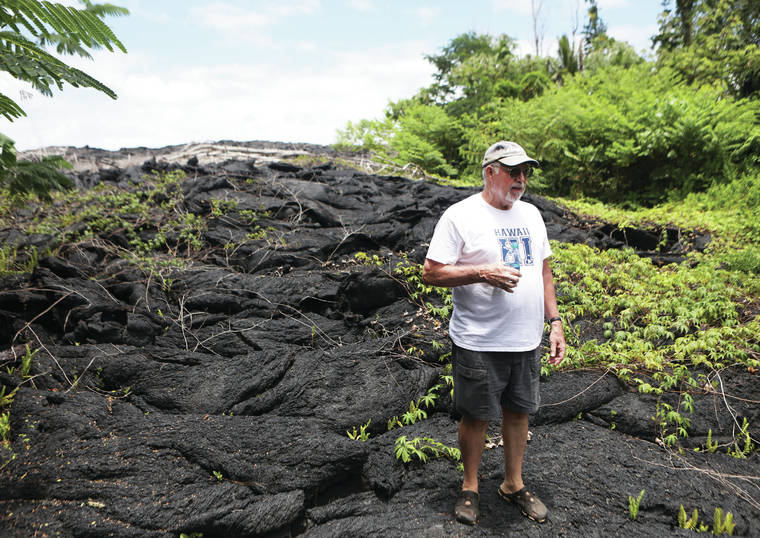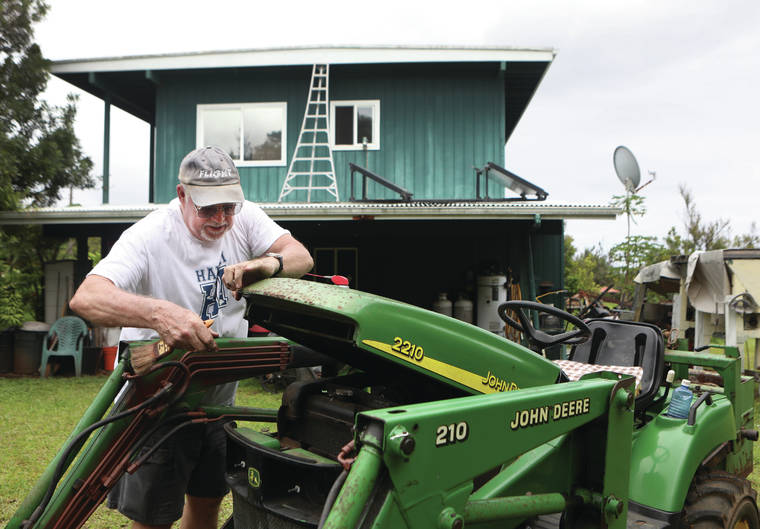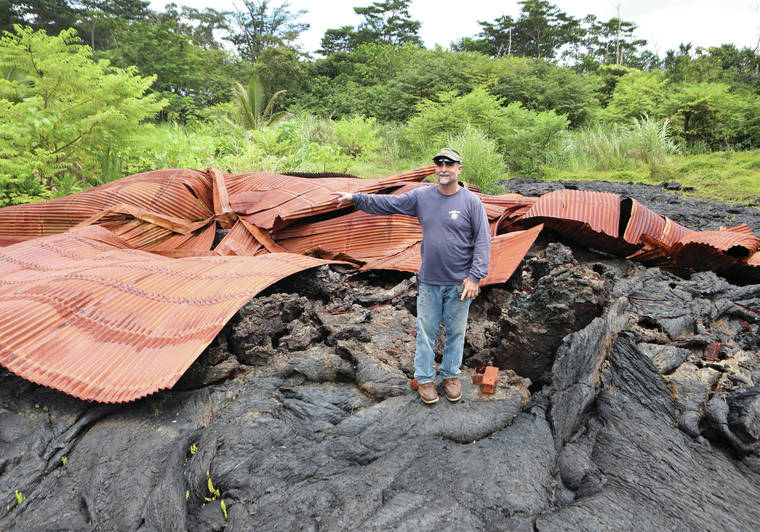For more than two years, residents in lower Puna anxiously awaited word from Hawaii County confirming what roads were scheduled for restoration throughout the communities devastated by the 2018 Kilauea eruption.
In June, they finally got their answer: The county would restore Pohoiki Road, stretches of Leilani Avenue, Lighthouse Road and Highway 137 — and no others.
The county’s recovery team specifically announced that Hinalo, Lauone and Honua‘ula streets — a trio of small residential streets that comprised Lanipuna Gardens — would not be restored.
While the announcement was met with general excitement from residents displaced from their properties by the eruption, others were left wondering how to return home without restored roads.
Ian McArthur, a Lanipuna exile living in Pahoa, estimated that restoring access to his Lanipuna property — which was isolated but not destroyed by lava and includes an intact home and a largely undamaged macadamia nut orchard — would probably cost no more than $50,000, which he said is a drop in the bucket compared to the $82 million in county and federal funds that will be used to restore the rest of the roads in lower Puna.
“They’re saying I could apply for a grant,” McArthur said, referring to disaster recovery grants that nonprofits could apply for until late July. “But why? They’re already getting $63 million from the feds.”
McArthur and his wife, Cherie, bought their home in Lanipuna Gardens 23 years ago, and over time bought some neighboring lots to build Puna Girl Farms. The farm’s four acres of macadamia nut trees are still there, but now are cut off from road traffic by about three quarters of a mile of lava.
Currently, McArthur’s road back home requires taking a roughly 50-minute drive across a makeshift road cut across the top of the lava, as well as agreements with neighbors whose property he has to pass through to reach his own property.
McArthur said he takes the trip regularly to tend to his orchard and do maintenance at his home.
“I like coming back to my house, but it’s very disappointing to see all my hard work completely gone,” McArthur said. “Everything is overgrown and not getting the care it needs. I had a beautiful trail around the mac trees, and it was so peaceful.”
Including the McArthurs, there are six landowners with property at least partly intact within the Lanipuna kipuka. One of them, Ralph Roubique, returned to his property for the first time last Monday.
“My house burnt, but I still have about half an acre of orchard left, and I’d like to be able to rebuild,” Roubique said. “I’m happy they’re reopening roads, but it would take less than a mile to reopen mine.
“I can’t understand why the county doesn’t open all of them,” Roubique continued. “If they’re county roads, they have an obligation to reopen them.”
When the county announced which roads would be reopened, the recovery team stated the decision was made based on community engagement and technical analysis of the geological conditions and hazards of the roads themselves.
McArthur said he has little faith the county will even reopen the roads it has committed to, wearily predicting that the county will drag its feet as long as possible until property owners give up.
“The funny thing is, (Hawaiian Electric) is fine with hooking us up to power again,” McArthur said. “We can have power, we can have water, but no roads.”
While the Lanipuna residents have been largely unhappy with the county’s decisions, residents of the nearby Leilani Estates subdivision are more mixed about the prospect. Leilani Community Association president Andy Andrews said a poll of about 80 residents earlier this year revealed opinions all across the spectrum regarding roads, tourism and more.
“Some folks were really in favor of reopening all of Leilani Avenue,” Andrews said. “But there were others who were concerned about using it to access land that would be used for nonconforming structures.”
However, Andrews said the view of Leilani residents, on the whole, seems to be satisfaction that the county is listening to them: The stretch of Leilani Avenue that will be restored — from Pohoiki Road to Kahakai Street — was approved based on conversations with the community association, Andrews said, and will allow access to a kipuka on Kahakai Street containing six intact homes.
Beyond Leilani Avenue, Andrews said there are no other specific roads the community is calling to be reopened. Rather, many residents are clamoring for reopened access to their own specific properties, while the community association itself has applied for a recovery grant from the county that would completely restore Moku and Kupono streets, which were largely untouched by lava, but were substantially damaged by seismic activity during the eruption.
But with the deadline for recovery grants passed, the Lanipuna residents are short on options. Ian McArthur said he has no intention of selling his property through the county’s Voluntary Housing Buyback Program — although he ruefully noted that his property would be worth at least $100,000 — and might resort to clearing the road himself with his own funds.
“It’ll get done one way or another,” McArthur said. “I just want to get back in there and start up again.”
Email Michael Brestovansky at mbrestovansky@hawaiitribune-herald.com.











